последние новости
Категории продукта
Горячий Продукты
-
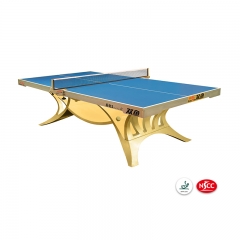
Премиум Настольный теннис для чемпионатов Волант Кинг
Этот стол для настольного тенниса подходит для чемпионатов. Утверждено ITTF и NSCC. Серебряная ходовая часть + синий свет
Подробнее -
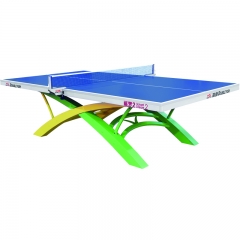
Официальный настольный теннис для турнира Volant Dream 2
Официальный стол для пинг-понга Volant Dream 2 для международных соревнований, разработанных компанией Double Fish Sports.
Подробнее -
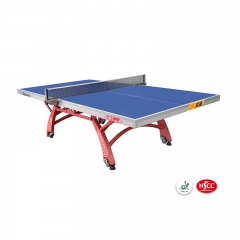
Официальный стол для настольного тенниса для Competitons XIANGYU 328
Премиум двойной складной стол для настольного тенниса, компактный дизайн Новая система складывания сводит к минимуму риск получения травм при хранении и перемещении стола. Утвержденный ITTF стол для настольного тенниса.
Подробнее -
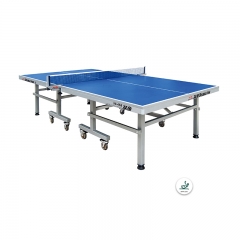
Официальный прочный настольный теннис для World Tour 99-45B
ITTF утвердил официальный прочный стол для настольного тенниса для международного турнира. Толщина столешницы: 25 мм КАЧЕСТВО ТУРНИРА - Этот профессиональный класс предназначен для самого высокого уровня конкуренции. СОВЕРШЕННО ДЛЯ СЕМЕЙ - предлагает премиум-игры для всех возрастов. Идите голова к голове или сложите для индивидуальной практики. 2-дюймовые тяжелые опоры стали выдерживают самые сложные проблемы. Отличный центр для игровой комнаты, логова или тренажерного зала. ЛЕГКАЯ СБОРКА - Играйте в считанные минуты с простой сборкой. Высококачественная сеть оснащена фиксирующими зажимами, которые легко прикрепляются.
Подробнее -
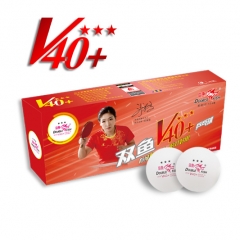
Лучшее качество Double Fish V40 + Volant 3 звезды Настольный теннис
Double Fish V40 + Volant 3 звезды Настольный теннисный мяч подтверждает ITTF последние технические стандарты T3.
Подробнее -
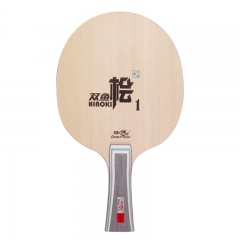
Double Fish QIJI Круглый настольный теннис
Double Fish QIJI универсальный настольный теннис, который является самым продаваемым настольным теннисом для настольного тенниса, идеально подходит для традиционного игрового мира
Подробнее
Отслеживание происхождения | Развитие завода по производству настольного тенниса в Гуанчжоу (Часть 2)
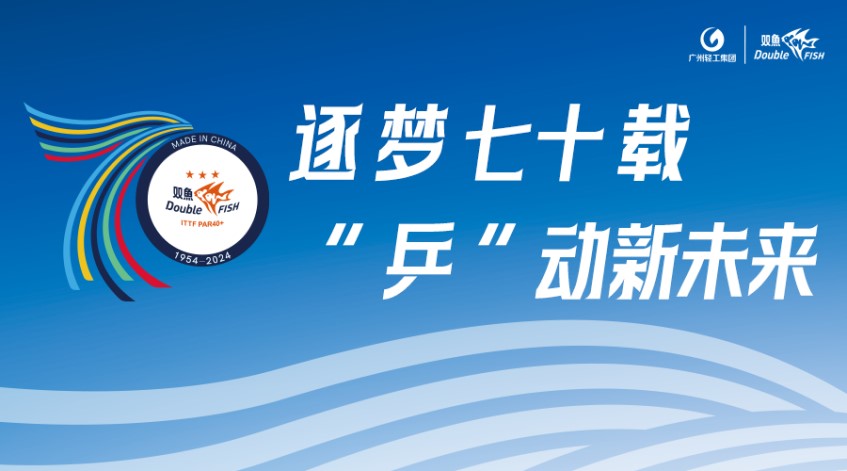
С осени 1960 года фабрика настольного тенниса Чэнгун более двух лет потратила на технологические инновации, которые к концу 1963 года в основном механизировали основные производственные процессы фабрики, улучшили выпуск и качество продукции и начали экспортировать продукцию. В 1963 году было произведено 3,2 миллиона штук, что более чем в три раза превышает 780 000 в 1960 году, из которых 58 400 было отправлено на экспорт.
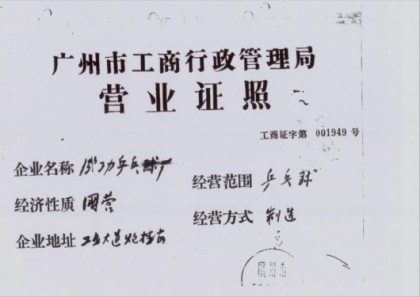
Бизнес-лицензия фабрики по производству настольного тенниса Chenggong
① Содержание этой статьи в основном основано на исторических данных о фабрике настольного тенниса Чэнгун и 303-304 страницах тома 5 (часть 1) «Городских хроник Гуанчжоу».
Однако, как только производство фабрики по настольному теннису Чэнгун процветало, нехватка водных ресурсов в районе храма Поло стала новой проблемой, ограничивающей дальнейшее развитие. В конце концов, вышестоящее подразделение решило переместить фабрику по производству настольного тенниса Чэнгун в Паолуган, рядом с промышленным проспектом Хэнань ②, чтобы решить проблему нехватки воды и еще больше расширить масштабы производства. Этот переезд ознаменовал начало новой главы в развитии фабрики Чэнгун.
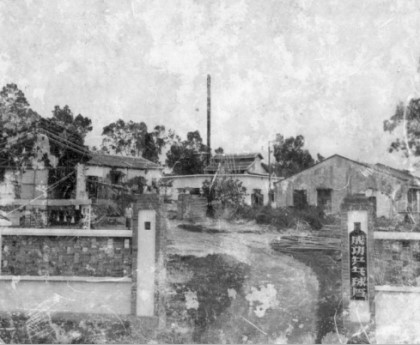
Фабрика настольного тенниса Chenggong переехала в Яньциган, район Хайчжу.
②Паолуган рядом с промышленным проспектом Хэнань теперь является районом Яньциган в районе Хайчжу. Начиная с 1952 года пригород Хэнань в Гуанчжоу строился как важная промышленная база Гуанчжоу. Этот проспект когда-то был сердцем промышленности Гуанчжоу и породил множество отечественных новинок. В период своего расцвета на Индустриальном проспекте длиной 5,5 километров производилась продукция, популярная по всей стране, такая как холодильники Wanbao, аккумуляторы Tiger Head, велосипеды Wuyang и т. д. Участок, куда переехала фабрика по настольному теннису Chenggong, изначально был керамической фабрикой. , который уже имел базовые заводские мощности, что обеспечивало удобство для расширения производства. При сильной поддержке вышестоящего подразделения фабрика настольного тенниса Чэнгун смогла приобрести землю и начать строительство, заложив тем самым прочную основу для будущего развития.
В 1965 году фабрика настольного тенниса Чэнгун добилась еще одного успеха, разработав первую в моей стране фотоэлектрическую машину для взвешивания мячей. Затем компания последовательно производила автоматическую машину для измерения центра тяжести, автоматическую машину для печати товарных знаков, автоматическую машину для обрезки кромок, автоматическую измерительную машину и т. д. и взяла на себя ведущую роль в реализации полуавтоматического и автоматического производства настольного тенниса в той же отрасли по всей стране. В 1966 году выпуск мячей для настольного тенниса превысил 10 миллионов штук. Во время «Культурной революции» оно объединилось с некоторыми заводами и также производило тиристоры.
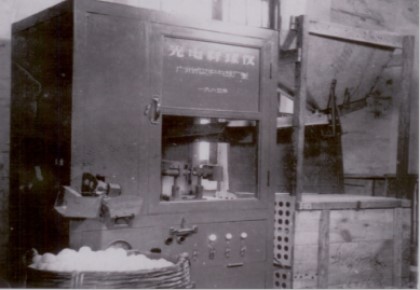
In 1965, Chenggong Table Tennis Factory pioneered my country's first photoelectric ball weighing instrument.
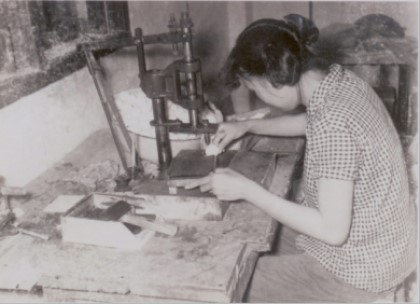
Automatic label printing machine developed by Chenggong Table Tennis Factory
In 1968, with the support and coordination of the local government, Chenggong Table Tennis Factory merged with Huada Badminton Factory③ and Zhendong Sports Goods Factory④ , significantly improving the productivity of the enterprise. Subsequently in 1969, the factory was renamed Guangzhou Sporting Goods Factory, marking the expansion of its product categories and business scope.
③According to the "Chronicles of Guangzhou City", the production of badminton in Guangzhou began in the early 1950s. With the rise of badminton, the production households continued to develop and gradually organized themselves. In 1956, the Yongjian Badminton Production Cooperative and the Yufeng Production Cooperative were formed. In 1960, the Yongjian Society was renamed the Huada Badminton Factory, with 100 employees. In 1964, the World Games brand badminton of the Yufeng Society was rated as a famous brand product in Guangzhou. During the "Cultural Revolution", all badminton production cooperatives were merged into the Chenggong Table Tennis Factory.
④Zhendong Sports Goods Factory mainly produced wooden-handled skipping ropes, table tennis nets, and volleyball nets. Before the merger, the two factories were located on the streets in the urban area, with scattered and narrow factory buildings (all old residential buildings), making material transportation and management extremely inconvenient. The merger improved the production conditions of such products. This article is compiled based on the oral narration of the retired leaders of Guangzhou Table Tennis Factory.
In 1972, the company was renamed Guangzhou Table Tennis Factory. In the same year, Guangzhou Table Tennis Factory introduced the innovative wax expansion method, replacing the old steaming process for producing close-seam balls, which doubled the work efficiency. The introduction of this technology not only improved production efficiency, but also made Guangzhou Table Tennis Factory the first company in China to achieve full mechanization of close-seam ball production.
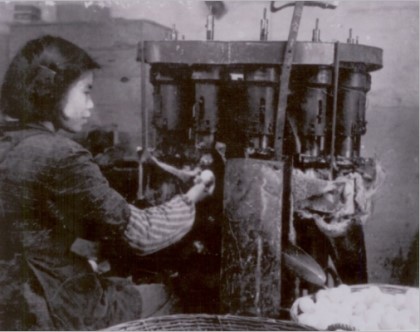
Table tennis ball expander from the mid-1970s
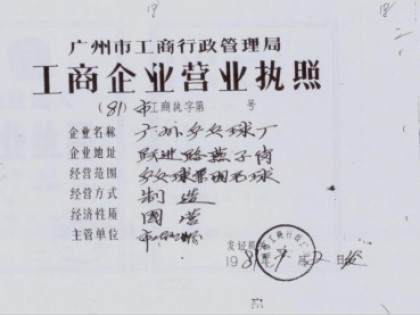
Guangzhou Table Tennis Factory Business License
In 1974, after five months of unremitting efforts and more than 130 precision tests, the Guangzhou Table Tennis Factory successfully developed China's first hard table tennis ball. This achievement marked a major breakthrough in China's table tennis manufacturing technology. The product was subsequently named "Shuangyu Brand". In 1979, this table tennis ball was officially approved by the International Table Tennis Federation and became the designated ball for international official competitions.
In 1980, "Double Fish" brand table tennis balls were officially rated as a national famous trademark and won the National Gold Award in the same year.
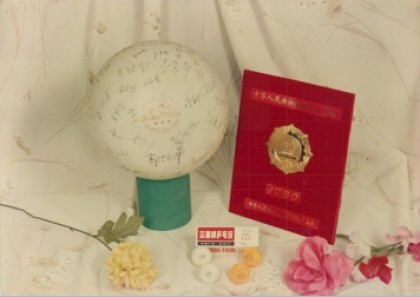
Doublefish table tennis won the national gold medal certificate
In 1981, with the booming domestic and foreign markets for badminton, the Guangzhou Table Tennis Factory restarted the production of badminton with the formal approval of the competent authorities. It focused on creating special balls for high- and mid-end competitions, strictly selected high-quality white goose feathers, and used imported cork and artificial leather as ball head materials to produce badminton with excellent whiteness, strong flight stability, and precise landing points. All products were sold to the Japanese market.
From 1986 to 1990, the annual output of badminton achieved an average high growth rate of 31%. In 1989, advanced Japanese production equipment was introduced, which greatly improved the production capacity and reached an annual production capacity of 24 million. In 1987, the Jinque brand badminton in the domestic market was rated as a high-quality product by the Ministry of Light Industry, and in 1990 it won the official certification of the national competition ball, marking the full recognition of product quality and technical level.
In 1986, as sales continued to expand, Guangzhou Table Tennis Factory set up branch factories in Zengcheng and Huaxian (now Huadu District, Guangzhou), focusing on producing mass-market table tennis balls to meet domestic market demand, while the main factory was committed to producing mid- and high-end table tennis balls for export. In 1987, total production soared to 63.02 million, of which 54.82 million were sold to overseas markets, generating US$2.18 million in foreign exchange revenue.
In 1988, the outstanding performance of Guangzhou Table Tennis Factory won the honorary titles of Provincial Advanced Enterprise and National Second-Class Enterprise. In 1990, Guangzhou Table Tennis Factory invested 2.5 million yuan in factory construction and technical transformation to further improve production capacity. In November of the same year, a new celluloid sheet plant was established in Zengcheng with an investment of nearly 2.57 million yuan. Through this series of transformation and expansion, the annual production capacity of table tennis balls doubled from 60 million to 120 million, making Guangzhou Table Tennis Factory one of the important bases for table tennis ball production in the world.
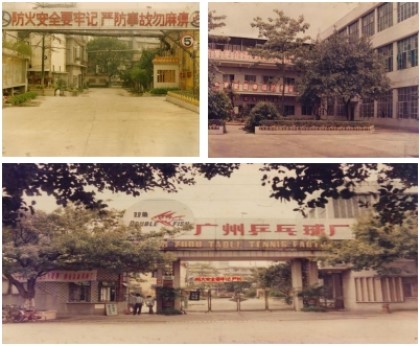
Guangzhou Table Tennis Factory in the 1990s
In 1994, the company relocated and expanded again⑤, requisitioned 50 mu of production land in Dabu Management District, Mayong Town, Dongguan City, relocated and renovated it, expanded its production scale, and achieved rapid improvement in production quality, laying a solid foundation for the company's sustainable development.
⑤ Поскольку основным компонентом целлулоида, сырья для производства настольного тенниса, является нитроцеллюлоза, этот материал чрезвычайно легко воспламеняется и стал причиной многих серьезных пожаров в Китае, в том числе пожаров на фабрике настольного тенниса Double Happiness в Шанхае и Тяньцзине. Фабрика настольного тенниса. 14 октября 1993 года на фабрике настольного тенниса в Гуанчжоу также произошел пожар, в результате которого сгорело 4000 квадратных метров зданий. Кроме того, быстрый рост жилых районов возле Яньцигана в 1990-х годах сделал угрозы безопасности в этом районе все более заметными. В связи с этим фабрика по производству настольного тенниса в Гуанчжоу решила полностью переместить свою производственную линию в Дунгуань, чтобы обеспечить более высокие стандарты безопасности и эффективность производства.
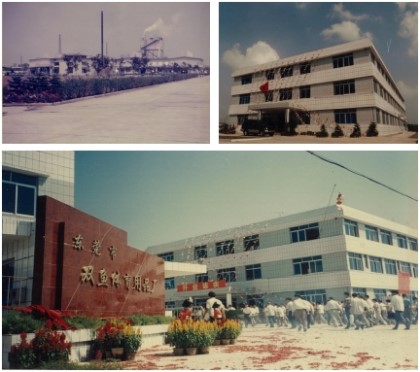
Завод в Дунгуане, 1990-е годы.
В 1995 году, благодаря значительному влиянию бренда Doublefish , фабрика по настольному теннису Гуанчжоу официально сменила название на фабрику спортивных товаров Guangzhou Doublefish.
26 февраля 1998 года фабрика спортивных товаров Гуанчжоу Шуангюй была объединена с компанией Guangzhou Shuangyu Sporting Goods Group Co., Ltd.























 Overseas business:(020)8431 9554
Overseas business:(020)8431 9554
 13829778212
13829778212